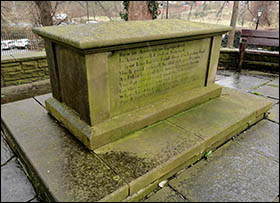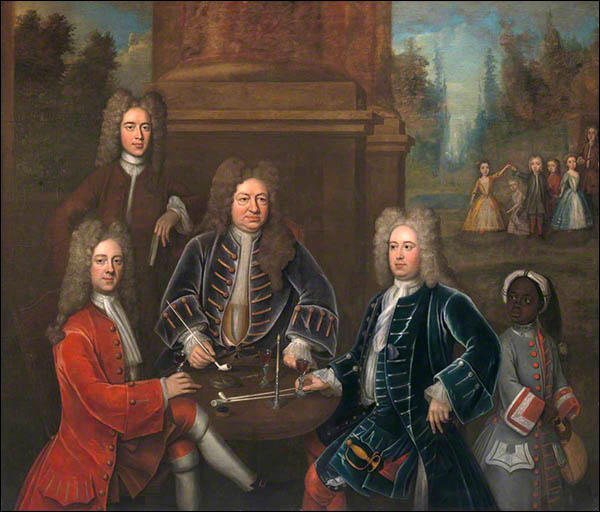Wrexham grave of Elihu Yale
Elihu Yale, d.1721
 Prestigious Yale University in the USA is named after Elihu Yale, buried here.
Prestigious Yale University in the USA is named after Elihu Yale, buried here.
Elihu (‘Eliugh’ on his tomb chest) was born in Boston, Massachusetts, in 1649. His parents David and Ursula moved to London in 1652, and later to Plas Grono (subsequently part of the Erddig estate). Elihu’s great-grandfather had bought Plas Grono in the 16th century.
Elihu was educated in England before embarking on a career with the British East India Company, where he rose up the ranks to become governor of Madras. There he married Catherine Hynmer, widow of a wealthy merchant. The couple had several children.
Elihu’s work for the company included overseeing sales of slaves and accounting for them as traded goods. The trade in slaves around the Indian Ocean was even larger and longer-lasting than that on the Atlantic Ocean.
When Elihu returned to Britain in 1699 he took with him the many valuables he had amassed while in India, where his employer had earlier accused him of using its funds for private gain. It also claimed he had neglected his duties. Cruelty was also alleged, with suggestions he’d arranged the deaths of some officials.
 His great wealth enabled him to live out his retirement in a London mansion and at Plas Grono. He became High Sheriff of Wrexham.
His great wealth enabled him to live out his retirement in a London mansion and at Plas Grono. He became High Sheriff of Wrexham.
In the 1710s he sent hundreds of books to the Collegiate School of Connecticut, along with valuables which were sold in the USA to raise enough money for a new main building, which was named in his honour. People soon attached the name “Yale” to the entire institution, which formally became Yale University in 1845.
In 2007 the university took down a 1719 painting titled ‘Elihu Yale with Members of his Family and an Enslaved Child’ – a copy is shown here thanks to the Yale Center for British Art. It depicts Elihu seated, with grandchildren in the background and a black slave child, wearing a metal collar, in the bottom right corner.
The epitaph on Elihu’s tomb acknowledges that he did “much good, some ill”.

